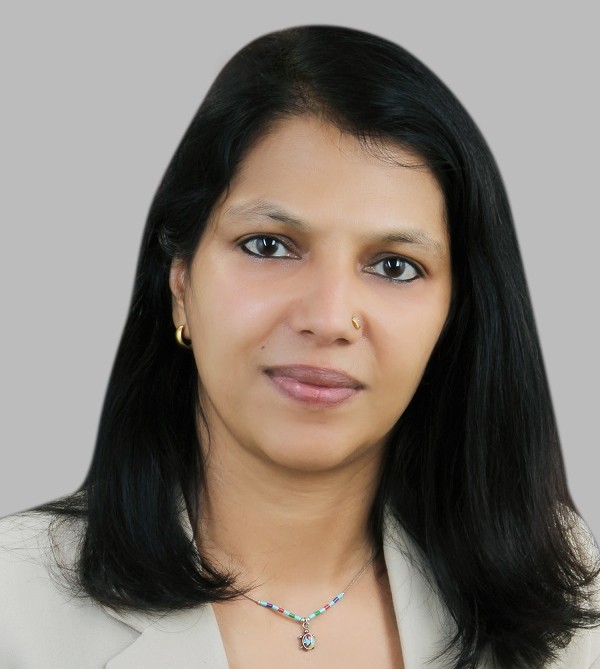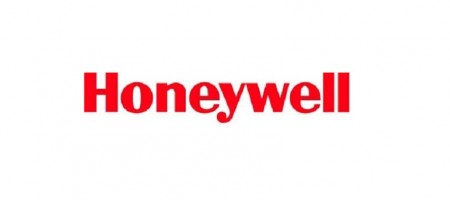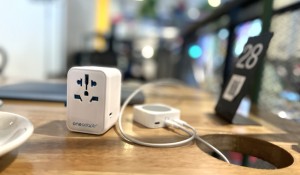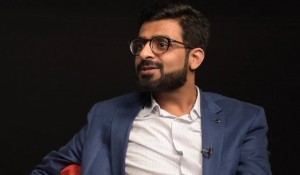Earlier this year, Honeywell named Neelu Khatri as the India president for its aerospace strategic business group. She brings with her strong management and leadership expertise, as well as an applied and practical awareness of the defense and aerospace sectors that she acquired being part of the pioneering group of women officers commissioned into the Indian Air Force. She served in Indian Air Force for 15 years, obtaining the rank of Wing Commander and joined Honeywell in 2014.
Her new role is significant, not only because these are interesting times for the aviation space in India, but also because she represents women in leadership roles, which serves as an encouragement to other women and goes a long way towards reducing gender inequality in organisations.

Neelu Khatri, President, Honeywell Aerospace, India (Image: Honeywell)
We got the chance to discuss with her about the aviation industry in India and the opportunities in this space. Here is an excerpt from the conversation:
What will be the key focus areas for you in the new role?
In my role as president of Honeywell Aerospace in India, I will be providing strategic direction for the India business. India has become the third largest aviation market in terms of domestic passenger traffic, surpassing Japan, so my focus is to develop and grow Honeywell’s services and products for regional air transport, business aviation, defence and space. Honeywell’s investment in the market will only continue to grow and help develop the aerospace landscape in India.
Another key focus area will be to collaborate with the government on aviation schemes such as Make in India and the regional connectivity scheme – UDAN (“Ude Desh Ka Aam Naagrik”). For this, we aim to work with businesses across the region to ensure Honeywell can expand within the market and localize products and services to best serve customers.
How significant is the Indian market as a piece of the global strategy for Honeywell?
Honeywell identifies India as a high-growth region and a key market. Customers here have very unique requirements, and we work to provide a tailored service for each them.
Honeywell Technology Solutions (HTS) is one of our technology development arms and India has HTS centers in Bangalore, Hyderabad and Madurai, helping us meet customer needs more efficiently. We are keen to continue focusing on growth in the region and will work to see how we can continue to lead industry innovation.
Additionally, we are investing heavily in the next generation of Indian aerospace engineers and pilots. Over the years, we have developed close connections with schools and universities to train young Indian engineers in aerospace and defense. Honeywell recently hosted the 4th annual design competition to provide an opportunity for students from a variety of design backgrounds (HCI, industrial design, product design, visual design, interaction design, etc.) to participate and demonstrate their problem solving and design skills for aerospace industry.
Honeywell India in collaboration with the STEM (Science, Technology, Engineering and Math) have launched the National Experiential Stem Education Program for Students and Teachers, in association with Agastya International Foundation. The association also enables us to promote STEM education by motivating and supporting women globally to pursue a career in the aerospace industry.
With most carriers in India squeezed for profits, do you see any resistance to invest in newer solutions?
Today, the Indian market favours the aircraft that have comparatively more robust connectivity options and technologically advanced solutions. Hence, in spite of financial net losses, the ministry and passengers demand better in-flight services and this is urging airlines to upgrade their fleets with modern connectivity solutions. Honeywell Aerospace is enabling airlines to save money on operational costs by helping them gain a better understanding of how their aircraft performs in-flight in real time using data analytics.
Some of the newer solutions that have been adopted by Indian airlines and airports are –
Jet Airways recently adopted Honeywell’s GoDirect Fuel Efficiency software to reduce fuel use and costs for the airline. The offering provides a full range of data analysis, reporting and monitoring tools for enhanced fuel conservation. Typically, fuel consumption accounts for as much as 20 to 40 percent of an airline’s operating costs. Existing users of the software have reported fuel savings of more than 2 percent annually, which has a major impact on the airline’s overall budget.
Honeywell’s IntuVue 3D weather radar is being equipped by Air India within its international Boeing 777 fleet to get accurate weather updates in real-time. The system has made a substantial improvement in predicting upcoming weather systems and turbulence so pilots can take the necessary steps to avoid them.
Honeywell’s SmartPath – the world’s only Ground-Based Augmentation System (GBAS) certified by the Federal Aviation Administration (FAA) – is currently functional at the Chennai International Airport. It has been selected by the Airports Authority of India (AAI) as part of a pilot project for satellite-based precision approach and landings at the airport. Implementation of this technology represents a proven, cost-effective and easy-to-install way to deliver immediate financial and operational returns for airlines.
Are there any challenges that are unique to the Indian market and what role is Honeywell playing to address them?
India is a very unique and an important market to Honeywell Aerospace. As an international company, understanding and meeting the needs of our customers here can sometimes be a challenge. To overcome this, the team here is focused on overcoming and pre-empting limitations in order to deliver results, as well as maintain and build relationships with key customers.
Currently, the aviation industry is demanding connectivity solutions for Indian airports as well as airlines. As Indian authorities are in talks with the aviation ministry to implement in-flight Wi-Fi, Honeywell is supportive of this initiative. Globally, passengers are receiving Wi-Fi that is 10 to 100 times faster with fewer dropped connections, and soon this technology will enter the Indian airspace. Once implemented, Honeywell Aerospace will be able to bring its international connectivity solutions to the Indian market. Honeywell has partnered with industry leader, Inmarsat, to deliver global high-speed in-flight connectivity technology to airlines and airplane manufacturers. Honeywell’s JetWave is a satellite communications hardware which exclusively supports Inmarsat’s Ka-band service. JetWave allows pilots, passengers, operators and maintenance personnel to connect to GX Aviation, an in-flight broadband service.
While evolving your core products and services, what other areas in aviation have you identified for investing in future?
The aerospace & defence sector in India has come a long way in the product-engineering value-chain. To keep this momentum growing, Honeywell continues to invest and work with the next generation of Indian aerospace engineers and pilots. Honeywell Technology Solutions Inc., an engineering arm based in Bangalore, has developed close connections with schools and universities and is committed to training young Indian engineers in aerospace and defense. Today, Honeywell has grown from 1,000 people in 2002 to 15,000 people in multiple locations throughout India.
The future of aviation calls for connected services within the aircraft for passengers, pilots and operators. Today, passengers just want a safe, comfortable flight with in-flight Wi-Fi and entertainment capabilities like the ones they get in the office and at home. Whereas pilots and operators want advanced technological tools that put real-time information and data at their fingertips, allowing them to focus on flying and efficiently tackle air-safety issues in the Indian airspace. Looking at this paradigm shift, Honeywell Aerospace continues to develop advanced connectivity solutions to cover all technological needs of airports, aerospace and defense.
Honeywell strongly believes in the Make in India initiative. In line with this initiative, Honeywell locally produces to boost the domestic aerospace and defence market. In association with Tata Power SED, Honeywell delivers its high performance TALIN inertial land navigator systems (INS) to the country. Our license to produce the Honeywell TPE331-5 engine is a result of our long standing partnership with Hindustan Aeronautics Limited.
Honeywell also supports the regional connectivity scheme, UDAN, launched by The Ministry of Civil Aviation to x. We feel optimistic about this innovative scheme to develop the regional aviation market, and with our existing technology and mechanical expertise, we will be able to support the government as well as other stakeholders to enter new regional markets. This will in turn provide us growth opportunities in India as well as scalable business.
Honeywell has been directing a lot of efforts towards communication technologies and IoT lately. What are some interesting outcomes that we can expect in this space going forward?
Today the Internet of Things (IoT) is top of mind for all industries, and we are making it relevant within aerospace as well. The global as well as Indian aviation industry is going through a digital shift, and Honeywell is leading the way by creating a completely Connected Aircraft.
For the past 100 years, Honeywell has been providing in-flight technology globally and has developed the expertise needed to enter this new digital era with solutions such as JetWave, GoDirect services and cockpit upgrade solutions.
In-Flight Wi-Fi – JetWave
Recently, announcements regarding in-flight Wi-Fi being introduced in India have been surfacing in the media, and the Centre is likely to permit in-flight Wi-Fi by August-end 2017. Because of passenger demand, in-flight Wi-Fi services are already available for passengers in international airlines. A recent global Honeywell survey states that in-flight Wi-Fi impacts how passengers book and prioritize their flight preferences. Honeywell Aerospace is one of the companies enabling airlines in India as well as globally to adopt in-flight Wi-Fi.
Inmarsat’s GX Aviation is powered through Honeywell’s JetWave hardware system, which provides high-speed in-flight Wi-Fi for airlines. It’s specifically designed to meet the needs of modern aircraft and passengers, and uses three Inmarsat Ka-band bandwidth satellites with spot-beam technology to give aircraft the internet speed and reliability that passengers are used to having at home or in the office. Passengers get 10-100X faster Wi-Fi with fewer dropped connections around the globe.
Leading global airlines such as Lufthansa Group, Singapore Airlines, Qatar Airways, Vietnam Airlines, Air Caraibes, Air New Zealand, Sri Lankan Airlines, Ethiopian Airlines, Norwegian Air Shuttle and Air Astana have already adopted the Jet Wave hardware for providing in-flight Wi-Fi to its passengers and pilots.
Real-Time Solutions – GoDirect
Today, pilots demand real-time solutions in the cockpit instead of the old-school paper charts. We recently launched our GoDirect suite of flight services which are available through a web portal or app store. These next-generation digital offerings provide access to an all-inclusive portfolio of aerospace services that improve flight planning, software updates, maintenance services and a variety of other tasks. GoDirect services range from fuel efficiency solutions, to online Wi-Fi access for in-flight passengers, weather information and customized avionic and mechanical expertise for airlines. In India, Jet Airways recently adopted the GoDirect Fuel Efficiency software, a part of Honeywell’s GoDirect family of Connected Aircraft technologies which is helping airlines reduce costs significantly and help regulate emissions by offering full range of data analysis, reporting and monitoring tools for enhanced fuel conservation.
Cockpit Upgrade Solutions
According to the International Air Transport Association (IATA), approximately 65% of recorded aviation accidents occur during approach and landing. To counter this, Honeywell’s SmartRunway and SmartLanding software promote stabilized approaches, decreasing the risk of long landings, hard landings, tail strikes and runway excursions. These solutions increase safety, improve pilot situational awareness and lower cockpit workload across an airline’s fleet. Another advanced technology, SmartPath GBAS helps reduce delays and journey times for passengers, lowering operational costs for airlines and improving traffic management throughout at the airport.
Can you give some highlights about Honeywell Venture Fund? What kind of startups are you looking to work with through the program?
The Honeywell Venture Fund is a $100 million investment that focuses on technology startups. We are delighted to share that one of the key focus areas will be aerospace, as Honeywell’s aerospace division is a larger driver of revenue for company through the production of auxiliary power units, aircraft engines and turbochargers.
Honeywell will be looking at technologies and startups that align with our core areas of focus and are potential disruptors in the market. Honeywell hopes to enhance its core innovations, including its range of connected technologies and GoDirect services that send, receive and analyse data from an aircraft’s parts.
You can keep up with all the developments from Honeywell Aerospace here. More details about Honeywell Venture fund can be found here.


















